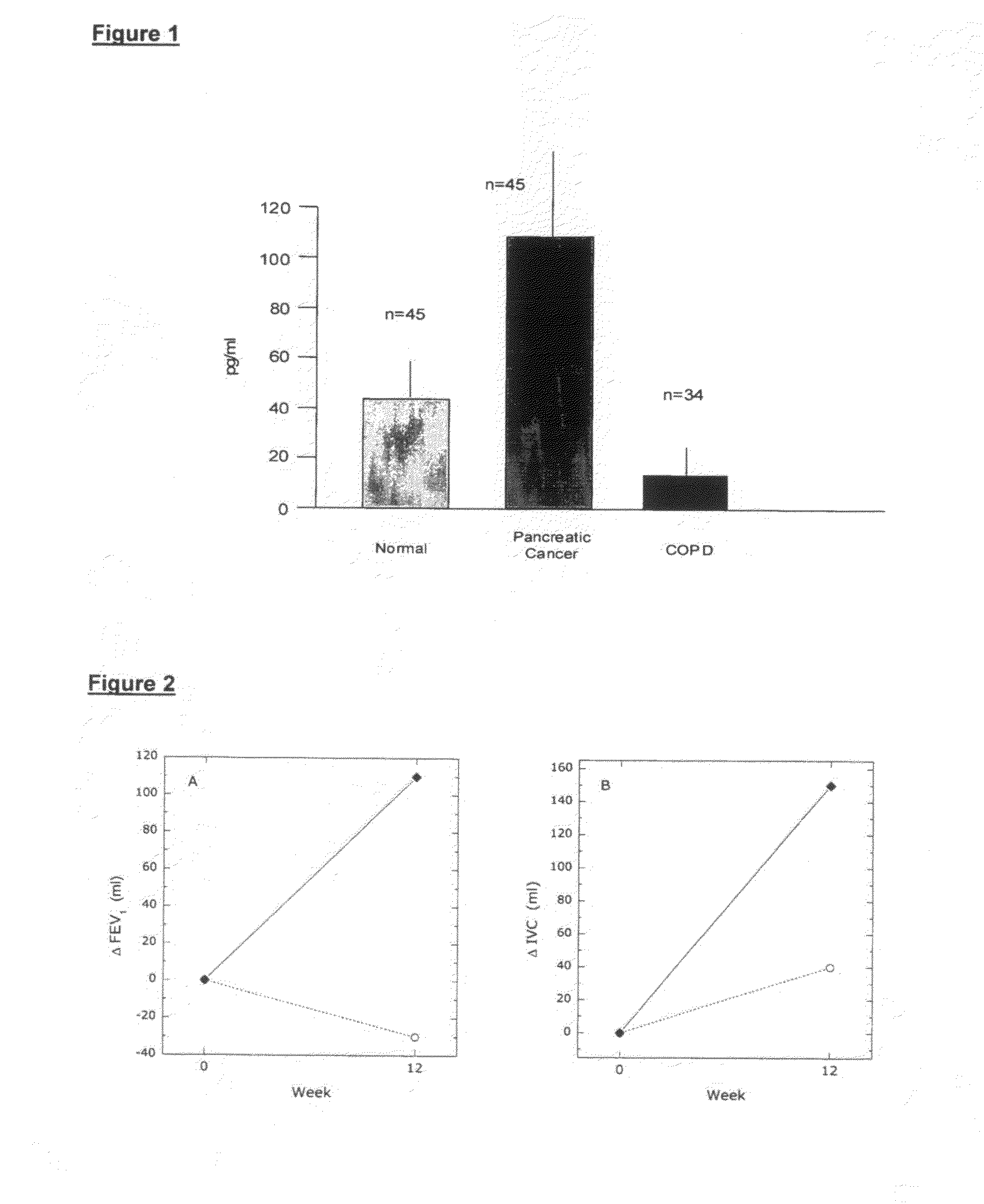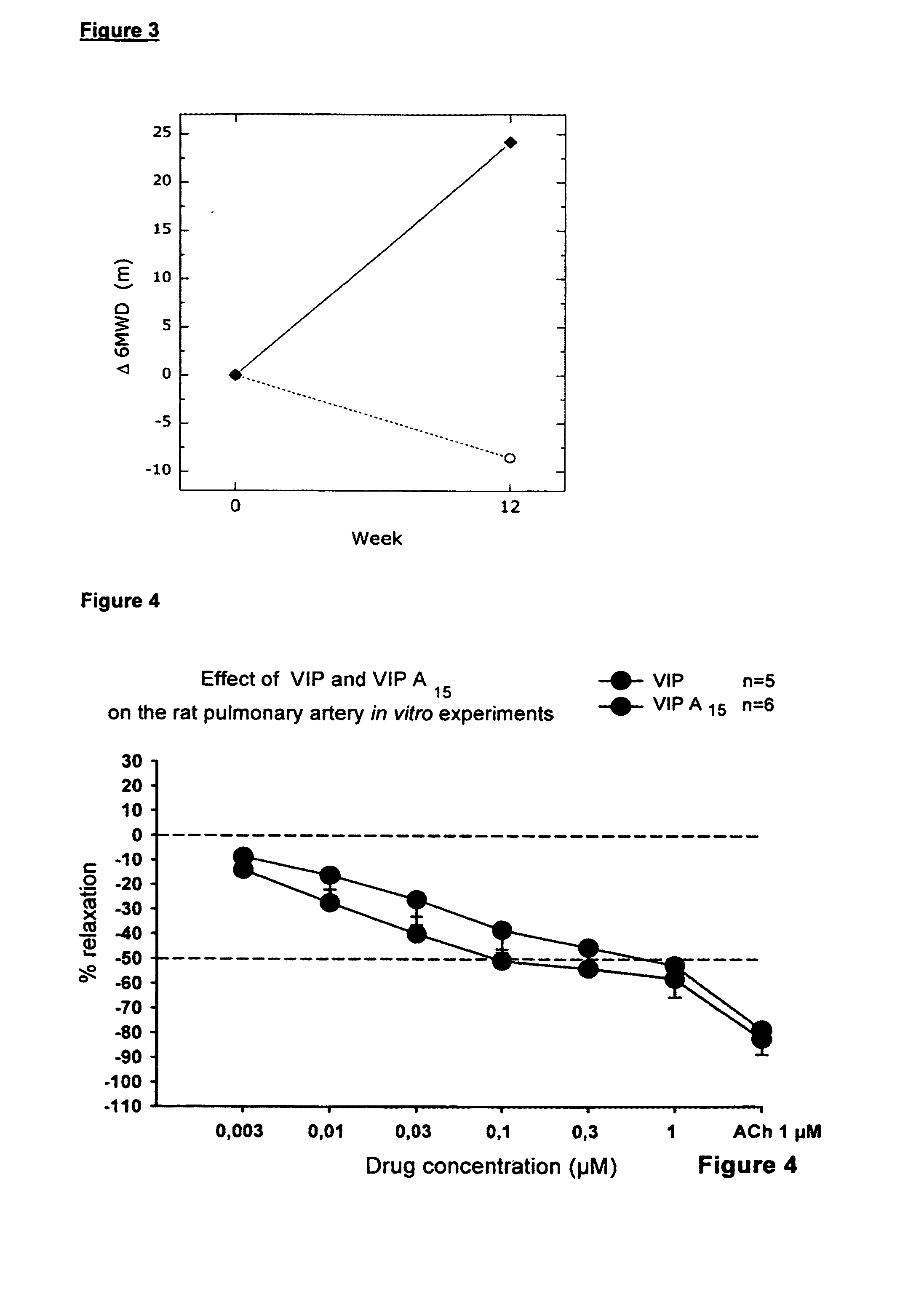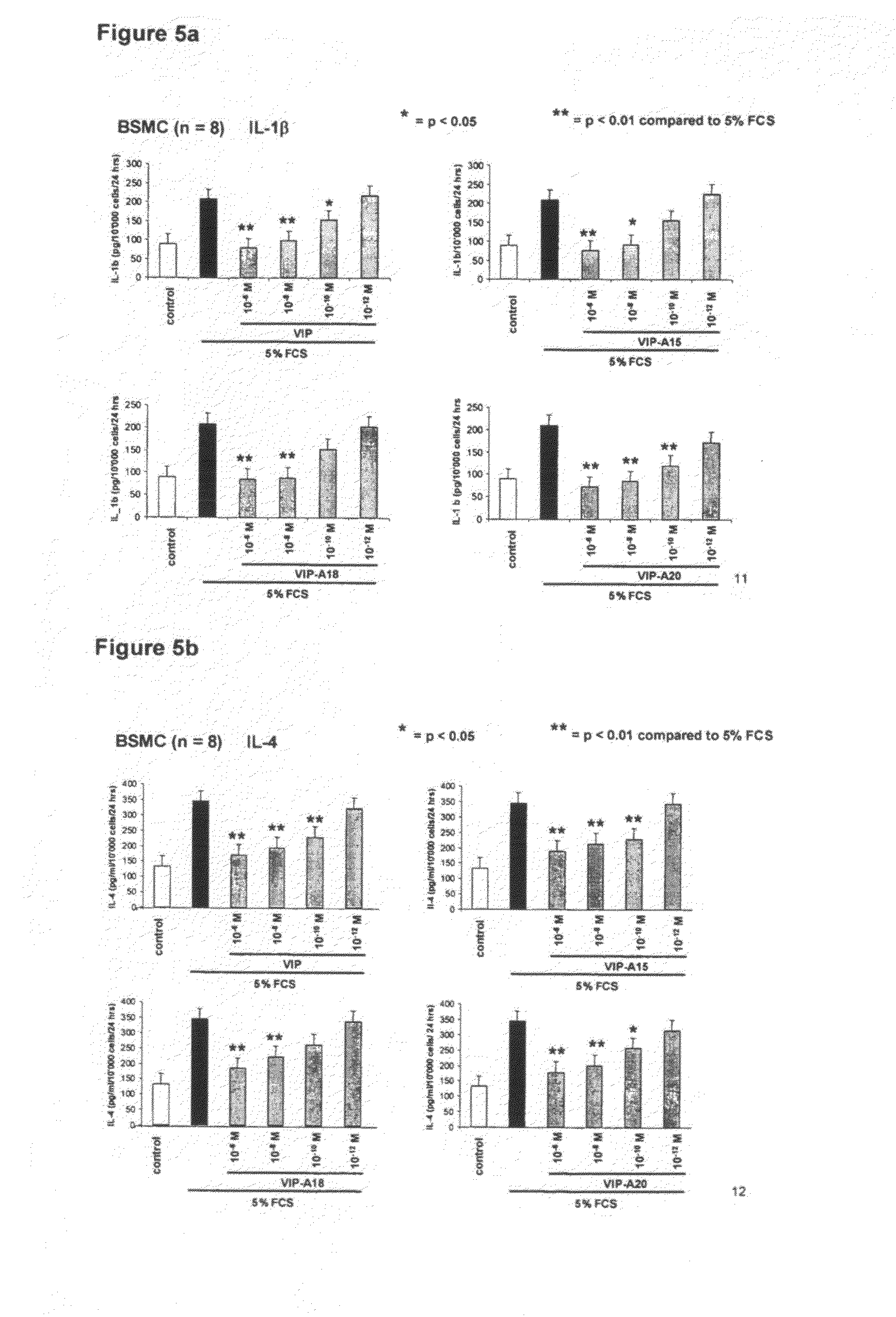Peptides with improved properties having the biological activity of vasoactive intestinal peptide (VIP) and their use for the treatment of lung diseases
a vasoactive intestinal peptide and biological activity technology, applied in the field of new peptides, can solve the problems of reducing the occurrence of bacterial infections, affecting the treatment effect, and increasing the mucus production in the airway,
- Summary
- Abstract
- Description
- Claims
- Application Information
AI Technical Summary
Benefits of technology
Problems solved by technology
Method used
Image
Examples
example 1
VIP and COPD
Phase II, Double-Blind, Randomized, Placebo-Controlled Clinical Trial
[0113]Chronic obstructive pulmonary disease (COPD) is characterised by progressive airflow limitation associated with chronic inflammation. Vasoactive intestinal peptide (VIP) is a potent bronchodilator, vasodilator and anti-inflammatory agent. The efficacy and safety of VIP in patients was assessed with moderate to severe COPD.
[0114]The present double-blind, randomized, placebo-controlled study was undertaken in an outpatient setting. COPD patients (n=34) were randomly assigned VIP 50 μg (n=17), or placebo (n=17), given per inhalation, 4 times daily for 12 weeks. VIP serum concentration was measured in all patients. Primary outcomes were health-related quality of life and exercise capacity. Secondary outcomes included the lung function parameters and COPD exacerbations.
[0115]In COPD, VIP serum concentrations were lower compared to controls (FIG. 1). Thirty (88%) patients completed the study (Table 1). ...
example 2
VIP and Cystic Fibrosis
[0117]The airway inflammatory response in CF is persistently neutrophilic, marked by upregulation of neutrophil chemotactic mediators such as interleukin 8 (IL-8) and leukotriene B4 (LTB4); florid accumulation of neutrophils in the airways; and neutrophil activation, with release of toxic products such as neutrophil elastase. The initial inflammatory response to most bacterial stimuli, in the lung and elsewhere, is “acute”, that is, neutrophil dominant such as the inflammation by COPD. Two CF patients were treated with 200 μg VIP daily, per inhalation and measured their lung function for and after 3 months treatment by VIP. Post-bronchodilator forced expiratory volume in 1 second (FEV1) and vital capacity (VC) significantly improved with VIP treatment after 3 months (Table 4).
example 3
Therapeutic Potential of VIP and the Peptides According to the Invention
[0118]The combination of low serum VIP levels in COPD patients, the VIP receptor up-regulation in chronic bronchitis patients, the pleiotrope anti-inflammatory effects of VIP, the possibility for local administration and the lack of local and systemic side effects in our trial, makes VIP a promising candidate for treatment of COPD and CF. Furthermore the inventors synthesized the synthetic peptides according to the invention, preferably peptide SEQ ID No.:2 (A-15), SEQ ID No.:3 (A-18) and SEQ ID No.:4 (A-20) with new structure and compared their anti-inflammatory and vasodilatory properties with VIP in vitro by the methods described in the following examples. The synthesis of the peptides according to the invention was carried out by known standard methods.
PUM
| Property | Measurement | Unit |
|---|---|---|
| concentration | aaaaa | aaaaa |
| concentration | aaaaa | aaaaa |
| concentration | aaaaa | aaaaa |
Abstract
Description
Claims
Application Information
 Login to View More
Login to View More - R&D
- Intellectual Property
- Life Sciences
- Materials
- Tech Scout
- Unparalleled Data Quality
- Higher Quality Content
- 60% Fewer Hallucinations
Browse by: Latest US Patents, China's latest patents, Technical Efficacy Thesaurus, Application Domain, Technology Topic, Popular Technical Reports.
© 2025 PatSnap. All rights reserved.Legal|Privacy policy|Modern Slavery Act Transparency Statement|Sitemap|About US| Contact US: help@patsnap.com



